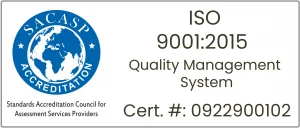How to overcome the challenges of Cross-Border Payments
Cross Border Payments Regulations
The G20 has made improving cross-border payments a priority for 2020. This work included identifying the cross-border payment challenges caused by a series of divergences in current processes and developing a set of key components to confront them.
In the work programme for 2021 – 22 released by Committee on Payments and Market Infrastructures (CPMI), one of its key priorities stated in it was to shape the future of payments. This includes cross-border payments, which the Bank of England anticipates will be good enough to justify over $250 trillion by 2027.
The more regions you choose to run a business in, the more regulations you must consider protecting yourself and your customers from fraud while also avoiding fines and lawsuits. Below are the major regulatory categories in cross border payments.
1. Policies governing payment networks:
This includes any rules, regulations, guidelines, or specifications established by payment networks, such as Electronic Fund Transfer Networks and Credit Card Associations. Payment networks can penalise and fine merchants who do not adhere to established policies.You must follow network policies such as appropriate display of payment brands, transaction-related receipt data requirements, and transparent disclosure of return and refund policies.
2. Data privacy:
Different regions have different regulations concerning the handling of personal data, which is generally characterised and often includes information such as an individual’s name, email, location, online identifier, IP address, home address, and so on, whether in a work or domestic setting. These regulations cover the rights granted to individual data subjects to the personal data stored, such as the right to prior notification of what the data will be used for, how the data will be handled, and when it will be deleted. Certain data privacy regulations must be followed depending on the region in which you operate.Business conducted in Europe is subject to the General Data Protection Regulation (GDPR), a regulation in place throughout the European Economic Area (EEA) that improves the degree of control that EEA and UK citizens/residents have over their data while also presenting a more unified environment for international business across Europe.
3. Consumer security:
Because new payment technology necessitates new payment security, various regions have enacted regulations to safeguard consumers against fraud and theft. The Revised Directive on Payment Services (PSD2), enacted by the European Parliament to better protect consumers when they pay online, is one of the more significant security measures. PSD2 is one of the most important EU regulations for merchants to be aware of it because it mandates Strong Customer Authentication (SCA) through three levels of identification for every transaction, ranging from card number verifications to texts with authorization codes.PSD2 and SCA apply to all online payments that pass through the European Economic Area (EEA) or the United Kingdom (UK). If you’re a European merchant who isn’t PSD2 compliant, any payments processed through the EEA may be declined — so you’ll need a payment processor that supports PSD2 compliance with features like 3-D Secure. Our NetRemit fully complies with PSD2 Open Banking regulations offering Strong and multi-layer security and offered through mobile with Strong Customer Authentication following PSD2 and GDPR regulatory requirements. Moreover, Macro Global offers Tavas – Open Banking Product Suite and Solutions for banks and financial institutions.
4. Payment Card Industry Data Security Standards:
A Data Security Standard (DSS) is a set of standards established by major card companies to ensure that all businesses that process, store, and/or transfer credit and debit card details maintain a secured infrastructure.These standards assist in defending against cyber-attacks, data hacks, as well as other security breaches, which can result in significant costs for lost business, credit monitoring, post-breach audits, and security updates.
5. Tax collection:
Tax obligations for businesses are determined by several factors, including sales revenue, transaction volume, and location of sales. Aside from the specific local tax laws, the payment model you use has an impact.
6. IT security:
The threat of cyber-attacks and data breaches puts businesses at risk of costly damage from data theft, ransomware attacks, and reputational damage. Cybersecurity regulations have been drafted to cover elements such as data centre redundancy, data storage, data recovery, and other security investments to ensure that businesses are protected from hackers.
Payment regulations differ depending on the location and payment method of a transaction. And, for cross-border payments, your payment provider must be familiar with each region of the world. 3-D Secure 2, for example, is a global specification designed to meet the PSD2 mandate for SCA. It is a sophisticated authentication solution that reduces fraud by determining a cardholder’s identity in real-time, thereby preventing unauthorised card use and protecting the seller from fraud.
When your payment provider offers built-in, out-of-the-box support for integrating 3-D Secure, it’s easy to ensure that you’re compliant with PSD2 regulations if you’re a business in the EU or UK. Macro Global’s Open Banking API supports 3-D Secure, PCI Compliance, and other regional regulations. Working with a payments partner who understands tax and regulations is the simplest way to ensure that you are properly managing all tax and regulatory issues when looking to optimise cross-border transactions.
Inequities, barriers, and issues in cross-border payments – complexity and risk
Historically, cross-border payments were hampered by high levels of complexity and risk. For example, frequent fluxutation in exchange rates, as well as instances when payment providers’ money does not reach its destination due to human error. Businesses, too, have seen international transactions decline and have had to wait weeks or months for payment for goods. There’s also a high risk of fraud and data loss in international transactions.
In terms of cost, speed, access, and transparency, cross-border payments lag behind domestic payments. Making a payment from one country to another is typically more difficult than making a similar payment within the same country. A cross-border payment can take several days and cost up to ten times more than a domestic payment in some cases.
The reality is that significant improvements are needed, particularly for SMEs, which are still hampered by slow procedures and high fees. With big improvements to be made, it stays their top priority.
When compared to large multinational corporations, the magnitude of the challenges around cross border payments becomes clear. There are dedicated in-house treasury teams in charge of all financial transactions and managing end-to-end cross-border payment requirements. SMEs, on the other hand, have historically not had access to this level of support, leaving them to struggle with opening and managing multiple bank accounts, as well as dealing with inflated costs.
Since then, many banks and other financial institutions have taken steps to close the gap, but many cross-border payment systems continue to face the same challenges:
- 1. High exchange rates
- 2. Slow transactions due to multiple intermediaries
- 3. Security issues
- 4. A lack of transparency
High exchanges rates
Cross-border payments are extremely expensive due to the numerous intermediaries involved in transferring money from one country to another, each of whom charges a fee for their services. Regulatory fees will also be charged, as well FX fees when converting one currency to another.
What implications this has for businesses, banks, as well as other financial institutions?
Because of the increase in overseas workers and international businesses, the cross-border payment space has become increasingly crowded. When retail and consumer customers choose a service provider, price will always be an important factor. Customers will shop around if the financial institutions they use do not provide a competitive rate and a reasonable charge.
Slow transactions due to multiple intermediaries
Cross-border payments via traditional bank transfer typically take two to five days to process which is a long time when compared to instant online domestic payments. This is due to the large number of entities involved in a single transaction. For example, if a Spanish wanted to send money to India, it might have to go through intermediaries in Germany or Dubai, then India. Cross-border payments are frequently delayed because of the lengthy series of steps required.
What implications this has for businesses, banks, and other financial institutions?
In a world where everyone wants the quickest and most convenient services, a slow and prone to delays cross-border payment system will not suffice. Businesses and consumers must conduct international transactions, and they must choose between old, slow, and expensive bank transfers and new payment service providers that provide an instant, less expensive alternative. While international transactions are undeniably more complex, organisations must strive to reduce processing time to meet their customers’ expectations.
Security Challenges
Consumers, like banks, want to know that their money is secure when making international transactions. There is no guarantee that a bank will be able to recover stolen funds if a hacker snuck money from a cross-border payment pathway. Such losses can be extremely expensive. Unfortunately, high-level security breaches in cross-border payment systems are common. Because each country follows its own regulations, the cross-border payment system is vulnerable to hacking whenever money enters a country with lenient security and access policies.
What implications this has for businesses, banks, and other financial institutions?
Cybersecurity is a major concern for any person or business making international payments. They’ll be much less inclined to do so using systems that aren’t consistently regulated and lack the best security and risk management procedures. This, however, is a major concern for financial institutions as the reputational risk can be enormous. Banks that are trying to cut costs and retain customers do not need to refund lost money, pay fines, or receive negative press.
Lack of Transparency
The lack of transparency in cross-border payment systems is a common complaint from both businesses and consumers. In fact, according to a 2017 SWIFT and EuroFinance survey, 64% of corporations would like to have real-time payment tracking solution, while 47% want better visibility into to the costs and deductions involved. This transparency is essential for organisations and consumers who want to avoid incurring hidden costs.
What implications this has for businesses, banks, and other financial institutions?
Increased transparency benefits all types of organisations. With these insights, they are not only provide better services to their customers, but also understand and improve errors that impact their profitability. Learning why certain payments are turned down or necessitate investigation, for example, will benefit from improving their processes, save time, and cut costs and resources.
What can the industry do to reduce complexity and risk?
Reducing the complexity and risk of cross-border payments is critical for increasing global trade and facilitating economic recovery. The payments industry should prioritise reducing the complexity of sending and receiving payments across borders and providing people with assurance that their transactions will be processed quickly and reliably in all markets. Transparency on upfront costs and greater predictability for fund delivery are the vital elements for success.
Our NetRemit – Cross Border Payment suite enables the financial institutions to deliver funds in real-time to bank accounts, cards, and cash. We’ve also made better use of technology to combat crimes such as money laundering, giving customers greater confidence when making international payments, as we know that the risk of fraud is the major concern when making cross-border payments.
Through NetRemit, you can establish a single connection to the entire world by collaborating with banks, non-banking financial institutions, and other digital platforms. NetRemit eliminates the barriers to cross-border payments so that people can focus on what matters most: supporting their loved ones and growing their businesses.

















